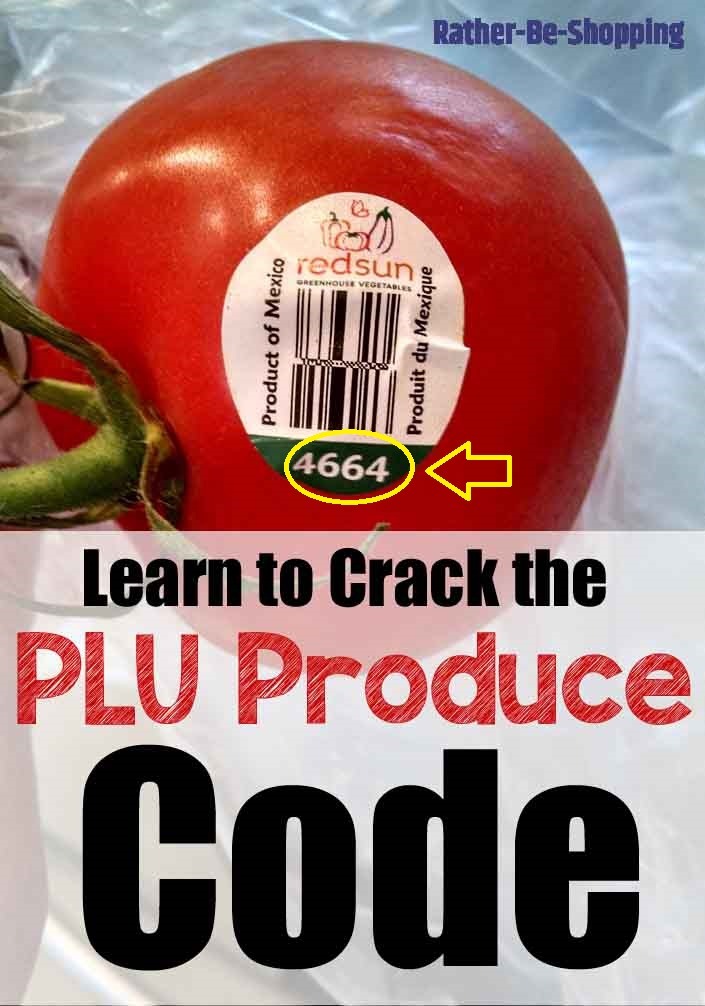Learn How to Crack the PLU Produce Sticker Code
As most regulars around here already know, I love to crack retail codes in an attempt to maximize your savings. This is especially true when it comes to cracking price tag codes at your favorite stores like Costco, Target, and The Home Depot. So when I discovered that much of the fruit and vegetables at your local grocery stores are marked with stickers that contain codes I knew I had to do a frugal hack about it. Here is what you need to know about produce stickers to check if you’re buying organic, genetically modified, or something “normal”.

Crack the Produce Sticker Codes:
If you know what the numbers on the PLU (Price Look-Up) Produce Sticker mean you can quickly determine if the item you’re considering purchasing is organic, genetically modified, or a conventional piece of produce.
Here is how it breaks down:
- 4 Digit Code. If the fruit or veggie has ANY 4 digit code on it (like the picture above) it is considered a regular, or Conventional Item.
- 5 Digit Code Starting with a 9. This code means that the produce is Organic.
- 5 Digit Code Starting with a 8. This code means that the produce is considered Genetically Engineered – Modified (GMO).
Wondering what “genetically modified” means? Keep reading…
Key Takeaways:
Genetically Engineered – Modified.
Back in the early 1990’s the idea of genetically engineered foods became popular as a way to create affordable food and hence the 8 code was created.
But the idea never gained popularity and actually backfired as most Americans avoided buying produce starting with an 8 on the sticker.
As of this writing the only produce you can find in the grocery store with an eight on the sticker is the Hawaiian papaya.
Amazingly, as of this writing, companies that produce genetically engineered foods are NOT required to label it as such.
Organic Products.
The only way to protect yourself from unknowingly buying genetically modified foods is to purchase produce with a 5 digit code starting with a 9 AND labeled as “Certified Organic” or “100% Organic”.
Buy at Your Own Risk.
It is also worth noting that the use of PLU sticker codes are optional and not a requirement for growers.
If there is no sticker on the produce at your grocery store you should assume that it is not organic and could very well be genetically engineered.
Ask the Reader: Were you aware that these produce sticker codes even existed? If so, do you use them regularly to determine what kind of fruit and veggies you are buying?

By Kyle James
I started Rather-Be-Shopping.com in 2000 and have become a consumer expert and advocate writing about out-of-the-box ways to save at stores like Amazon, Walmart, Target and Costco to name a few. I’ve been featured on FOX News, Good Morning America, and the NY Times talking about my savings tips. (Learn more)

Definitely some good info here, Kyle! I’ll keep this in mind when I’m at the store next time. In the past I never really gave much thought to the PLU sticker.
It’s kind of cool, especially if the produce is suppose to be organic but there is no evidence that it actually is.
I bought some gala apples with the plu code 21405. That is very unusual and have not been able to find that in any database.
Do you know what a plu for gala apples with the beginning “2” means?
Thank you.
I have a Gala apple here thats 62021 code.. but cannot find it in any database online.. but nobody seems to have 6 as a prefix code meaning in their information
I have produce, 5 digits, 19615….its on oranges…what does that code mean?